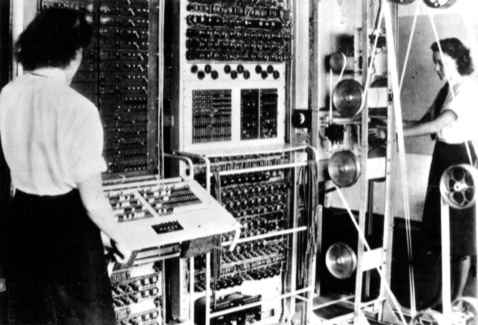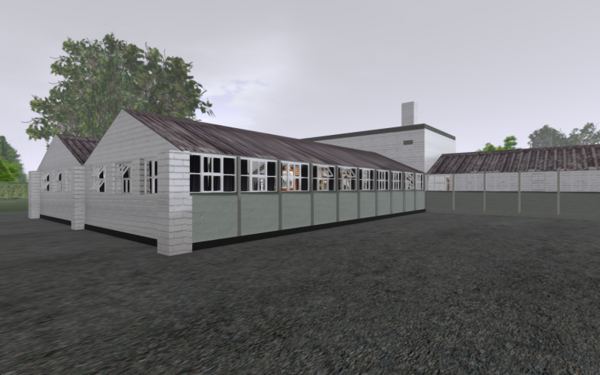| Block H and Colossus Revisited In Virtual Reality |
| Written by Sue Gee | |||
| Wednesday, 24 September 2014 | |||
|
Block H at Bletchley Park, built in September 1944 specifically to house the Colossus computers, was the world's first purpose built computer centre. To mark its 70th anniversary Colossus veterans were treated to a virtual reality experience that took them back to the 1940s.
Colossus, the fist electronic computer, was shrouded in secrecy not only during its period of operation but for a long time afterwards. Information of its existence, and its role in shortening the war by speeding up the deciphering of the top secret Lorenz/Tunny messages between Hitler and his generals, only came to light 30 years later.
Now Block H is home to the UK's National Museum of Computing (TNMOC) and its star exhibit is a rebuilt version of Colossus, which is open to the public on a daily basis.
Now the museum is embarking on a project to create a virtual reality Block H so that today's visitors can appreciate it as it was in the 1940s. Among the first to try out the VR experience were eight Colossus veterans who attended the 70th anniversary Block H celebration together with relatives of people key to the breaking of the Lorenz cipher and the development of Colossus.
Chris Monk, Learning Co-ordinator at TNMOC, explained: “We used OpenSimulator, open source software, and some high-powered PCs from Chillblast to recreate a virtual Block H. Our early attempts were rough and ready, but the reaction of visitors has astounded us. They really got it and their imaginations were unleashed especially when they used the Oculus Rift virtual reality headset to walk past the whirring Colossus computers and retrace the steps they had just taken in today’s Block H."
“Talking to the Colossus veterans at the reunion we have learned a lot more about the nature of Block H in the 1940s. Even after so many years, the veterans were able to recall some key facts which are helping the project. We’ve encountered quite a few surprises about life back then. When I asked what their desks were like, the veterans looked at me askance — they had no desks, they perched on stools when necessary! The veterans thought the harsh fluorescent lights, a fledgling technology back then, were particularly realistic in our recreation. A lot more research is required to develop the project and the team has even been carefully scraping eight layers of paint in small patches to re-discover the original wall coverings.”
Bob Willett, a TNMOC trustee, concluded: "The industrialisation of code-breaking in Block H did not just change the outcome of war. It marked the beginning of a series of achievements that have helped create our modern world. At the Museum we want to tell that story to inspire young people and highlight the significance of computer sciences and engineering in creating an innovation culture that is at the heart of successful modern economies."
Although located on Bletchley Park, TNMOC is separate from the Bletchely Park Trust, which, as we reported in January, has erected an unsightly fence that makes it more difficult for visitors to see the Colossus and Tunny Galleries when they visit the Bletchley Park site. It is the Bletchley Park Trust that has received a massive injection of funds for restoration and TNMOC has to raise funds separately through its own efforts. A pledge by an individual benefactor of £1 million if matched funding is found means that currently every pound or dollar donated to the TNMOC will count double. Remember - Bletchley Park is about the war; TNMOC is about computer history. The interest they have in common is Colossus. More InformationColossus veterans revisit virtual and real worlds The National Museum of Computing Related ArticlesColossus Re-enactment To Mark 70th Anniversary UK National Computer Museum Off-Limits At Bletchley Park
To be informed about new articles on I Programmer, install the I Programmer Toolbar, subscribe to the RSS feed, follow us on, Twitter, Facebook, Google+ or Linkedin, or sign up for our weekly newsletter.
Comments
or email your comment to: comments@i-programmer.info |
|||
| Last Updated ( Saturday, 31 January 2015 ) |






